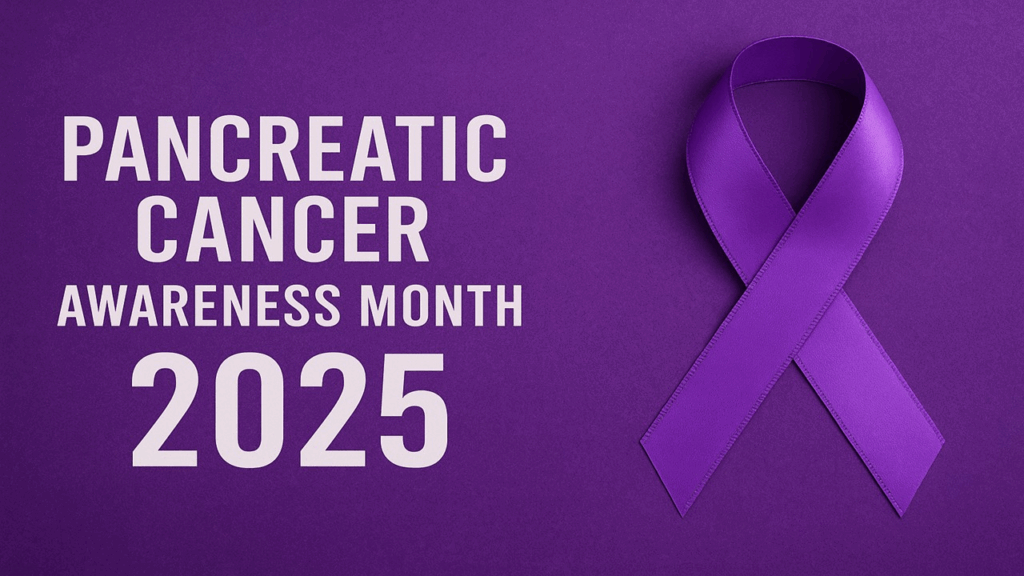Pancreatic Cancer Awareness Month 2025 arrives at a critical inflection point for one of the most lethal solid tumors in oncology.
Pancreatic cancer, predominantly pancreatic ductal adenocarcinoma, is characterized by late-stage diagnosis, a highly fibrotic tumor microenvironment, early metastatic spread and limited responsiveness to current systemic therapies.
This month underscores the urgency of accelerating advances in population risk stratification, biomarker-driven early detection and novel therapeutic strategies that can meaningfully shift survival curves in this historically refractory disease.
This year, initiatives include lighting landmarks purple, sharing stories of survivors and caregivers, promoting genetic counselling for at-risk individuals and advocating for increased funding for research into early detection and innovative therapies.
Read Xtalks Clinical Edge™ Issue 6
Xtalks Clinical Edge is a magazine for clinical research professionals and all who want to be informed about the latest trends and happenings in clinical trials. This magazine immerses you in a world where industry leaders, patient advocates and top researchers converge to provide the most insightful perspectives on clinical trials.
High-Mortality Burden and Late-Stage Presentation
Pancreatic cancer is known for its stealthy onset and aggressive progression. Unlike many other cancers, it rarely gives clear early signals and is often diagnosed only after it has advanced. Globally and in the US, survival rates remain dismally low, yet research and advocacy are gaining new momentum. The five-year survival rate for pancreatic ductal adenocarcinoma stands at only about 13% in the US.
In the US alone, estimates for 2025 placed new diagnoses at about 67,440, with approximately 51,980 deaths. Unless breakthroughs in early detection and treatment accelerate significantly, pancreatic cancer is projected to become the second‑leading cause of cancer-related death in the US by 2030.
Hope and Progress in Pancreatic Cancer Research
Despite its persistent clinical and biological complexity, emerging evidence points to measurable progress in pancreatic cancer detection and treatment strategies.
For example, a new blood test called PACMANN (protease activity-based assay using a magnetic nanosensor) was reported to detect pancreatic cancer with 73% sensitivity and 98% specificity in initial studies, and 85% when combined with the established marker CA 19-9. This minimally invasive detection method shows promise for identifying the disease earlier, when treatments may be more effective.
Furthermore, the field is investigating AI to analyze imaging data and electronic health records (EHRs) for early indicators of pancreatic cancer, systems that could someday identify high-risk individuals before tumours spread.
Drugs Candidates in Clinical Trials for Pancreatic Cancer
While pancreatic cancer has long been regarded as a “treatment dead end,” recent advances are changing that outlook. Researchers are making significant progress in targeting specific molecular subtypes of the disease, particularly those driven by RAS mutations or other genetic changes.
For example, the bispecific antibody zenocutuzumab (zbco) (Bizengri) has already received accelerated approval from the FDA for adults with advanced, unresectable or metastatic pancreatic adenocarcinoma harbouring an NRG1 gene fusion.
Looking ahead, one of the most promising candidates is daraxonrasib (RMC-6236), a novel oral RAS(ON) multi-selective inhibitor developed by Revolution Medicines. This drug is currently in two global Phase III trials (RMC-302/RESOLUTE-302) involving patients with metastatic pancreatic ductal adenocarcinoma, and the company recently reaffirmed that enrolment is on track. If the results are positive, such a trial could lead to a regulatory submission in the near future.
Another notable investigational treatment is quemliclustat, a CD73 inhibitor being evaluated in a Phase III trial alongside chemotherapy and the PD-1 inhibitor zimberelimab. By blocking the production of immunosuppressive adenosine in the tumor microenvironment, quemliclustat aims to enhance immune response and overcome pancreatic cancer’s resistance to checkpoint inhibitors. The trial targets patients with metastatic disease and builds on earlier-phase results that showed encouraging signs of immune activation and tumor control.
These developments signal a strategic shift: instead of purely cytotoxic treatment, the focus is now on precision‑targeted inhibitors, immunotherapy combinations and microenvironment-modifying agents. For hopeful patients and advocates, this means there may soon be new standard therapies beyond existing options.
What You Can Do This November
During Pancreatic Cancer Awareness Month 2025, there are many ways to support this important cause.
Sharing accurate information about pancreatic cancer risk factors and symptoms can save lives, especially since early detection could potentially increase survival rates to over 80%.
Wearing purple or lighting up public spaces in this colour has become a strong visual sign of solidarity.
Donating or volunteering with pancreatic cancer groups can accelerate research and improve support services.
People with a family history or genetic risks should think about genetic counselling and regular checkups.
Promoting healthy habits, such as avoiding tobacco, maintaining a healthy weight and managing diabetes, can also help reduce the risk.
By recognizing the severity of pancreatic cancer and embracing the call to action this November, communities can amplify the message: early detection saves lives, awareness fosters hope and collective engagement paves the way for breakthroughs.
Wearing purple is more than a gesture; it is a pledge to stand with patients, to educate others and to push forward until survival rates improve and cures are within reach.












Join or login to leave a comment
JOIN LOGIN